Flatey Island and Birds
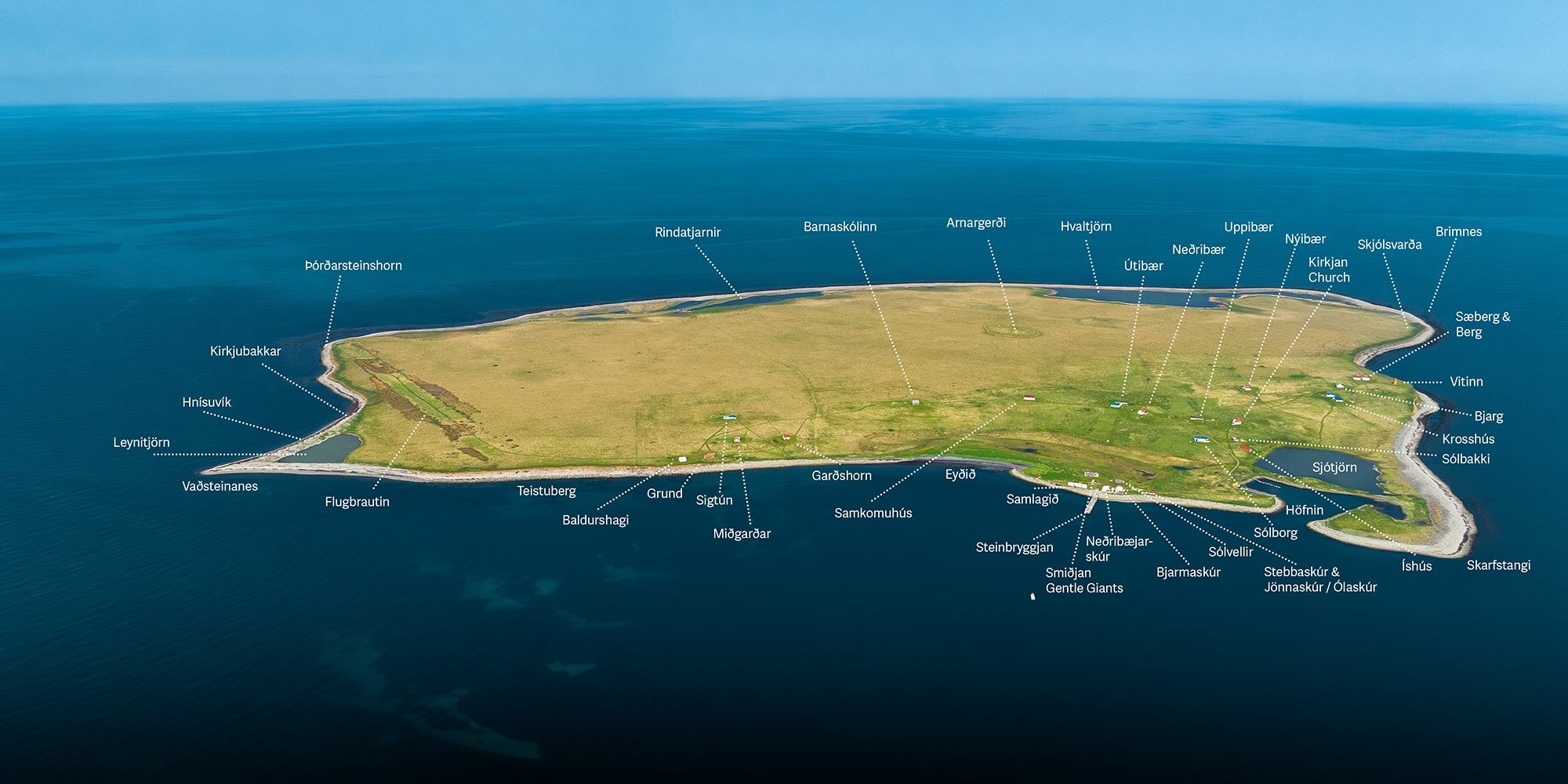
PARADISE OF SKJÁLFANDI BAY
Flatey Island is an island which is located on the north-western part of Skjálfandi Bay, 14,7 nautical miles from Húsavík. The name means "flat island" and the highest peak rises only about 22 m above sea level. With the length of 2,5 km and 1,7 km wide, Flatey Island is the fifth largest island around Icelandic waters.
The island is a paradise for bird watching with over 30 different species during the breeding season.
History
Flatey Island was settled early in historic times and the population increased during the first decades of the 20th century. In 1942, the population was at its highest with 120 people.
The islanders earned their living from fishing and agriculture. The fishermen went out on rowing boats around the island, where there are highly productive fishing grounds, especially for cod and lump fish.
Since the soil on Flatey Island is very fertile, the inhabitants were also able to practice agriculture and most families had some farm animals such as cows, sheep or hens.

The living conditions were hard at that time as there was no electricity or fresh water supplies. The winter storms could be harsh and the distance to the mainland (Húsavík) was far at that time. Twice a month a boat went from the island to Húsavík, stopping at Nausteyrarfjara in Flateyjardalur (Flatey Island Valley), transporting passengers, groceries and other stocks.
The local community was very active when the population was at its peak. However, it became difficult for Flatey Island to compete with other communities that grew faster with increasing access to electricity and hot water in homes. People started leaving the island and moving to places such as Húsavík. In 1967, the last inhabitants left Flatey Island and it has not been permanently inhabited since.
Nowadays Flatey Island is mainly inhabited in the summertime by families returning to their roots as well as tourists visiting the local treasure.
Buildings and Structures
Several structures were built on Flatey Island when the island was permanently inhabited:
- A church was built in the early years but was shut down in 1884. In 1960, a new church was consecrated. This new church came from the meanwhile uninhabited Flatey Island Valley. The church is kept up well and today there are still events taking place there such as weddings and concerts.
- A schoolhouse was built in 1929. There was only one teacher in the school and two classes, class 1-5 and 6-10. There was also a library and a sport hall in the same building. School activities were traditionally from October throughout April, as children were helping at home with fishing and farming during the other months of the year.
- The first lighthouse was built in 1913 and rebuilt in 1963. It stands on the highest point of the island, 22 m above sea level. The lighthouse is still functioning and in use, runs by gas and has backup batteries.
An icehouse was built in 1937 near the harbour. It was used by the islanders as a refrigerator for their food supplies. - A radio telegraph was put up in 1931.
An airport was made on the western part of the island from north to south. It was 900 m long and the first aeroplane landed there in 1955. It has not been used very often but sometimes private aircrafts have landed there.
Newly renovated (GREEN) VIP house
Today, many buildings have been renovated and are used as summerhouses. Some houses are in very frequent use, but no one lives there all year round. Most of them are owned by relatives or descendants of the former inhabitants. Some are used as guesthouses. In most of the houses generators are used as electricity supplies, some use gas, which is also used for heating up.
Gentle Giants has renovated one of these buildings and today offers a new and beautiful (GREEN) VIP house with a large dining hall and indoor facilities for up to 60 people and WC.
Getting to Flatey
Stefán Guðmundsson, the owner of Gentle Giants, is proud of his strong family connections to Flatey. His grandparents, who had lived their whole life by Skjálfandi Bay, moved to the island and his father was born and brought up there. Apart from the family house where his father grew up, he also has his own private house which has been nicely renovated and is today well used as a second home.
Gentle Giants offers all kinds of private tours from Húsavík to Flatey Island. Ideal for individuals and groups on all occasions, basic or luxury high-end. The company has strong roots to Flatey Island and offers a brand new and environmental friendly building with a large dining hall as well as outdoor BBQ facilities on the island.
Inspired to visit Flatey? Contact us for more information on [email protected] or view our tours page about Flatey.
Birdlife in Flatey
Flatey has a rich fauna, especially during the summer when breeding takes place.
Over 30 species of birds can be seen on Flatey.
| Jóhann Óli Hilmarsson Photos© |
Icelandic |
Latin | English | German |
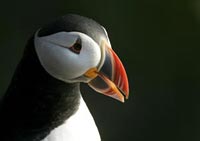 |
Lundi | Fratercula arctica | Atlantic Puffin | Papageitaucher |
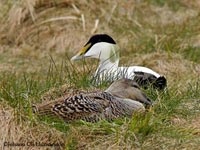 |
Æðarfugl | Somateria mollissima | Common Eider | Eiderente |
 |
Kría | Sterna paradisaea | Arctic Tern | Küstenseeschwalbe |
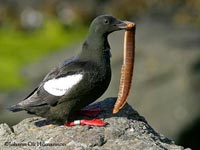 |
Teista | Cepphus grylle | Black Guillemot | Gryllteiste |
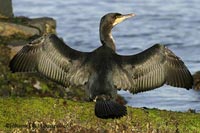 |
Dílaskarfur | Phalacrocorax carbo | Cormorant | Kormoran |
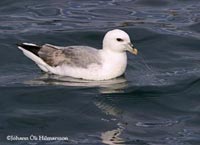 |
Fýll | Fulmarus glacialis | Fulmar | Eissturmvogel |
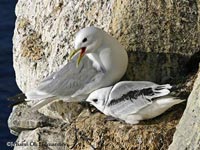 |
Rita | Rissa tridactyla | Kittiwake | Dreizehenmöwe |
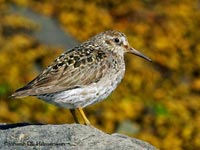 |
Sendlingur | Calidris maritima | Purple Sandpiper | Meerstrandläufer |
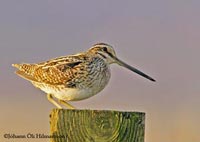 |
Hrossagaukur | Gallinago gallinago | Common Snipe | Bekassine |
 |
Óðinshani | Phalaropus lobatus | Red-necked Phalarope | Odinshühnchen |
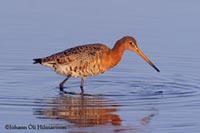 |
Jaðrakan | Limosa limosa | Black-tailed Godwit | Uferschnepfe |
 |
Spói | Numenius phaeopus | Whimbrel | Regenbrachvogel |
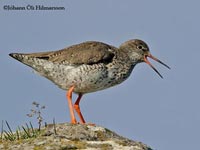 |
Stelkur | Tringa totanus | Redshank | Rotschenkel |
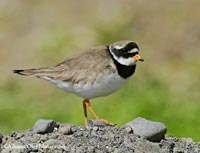 |
Sandlóa | Charadrius hiaticula | Ringed Plover | Sandregenpfeifer |
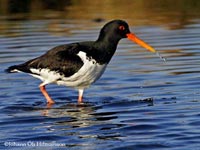 |
Tjaldur | Haematopus ostralegus | Oystercatcher | Austernfischer |
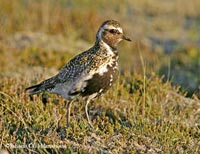 |
Heiðlóa | Pluvialis apricaria | Golden Plover | Goldregenpfeifer |
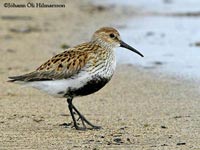 |
Lóuþræll | Calidris alpina | Dunlin | Alpenstrandläufer |
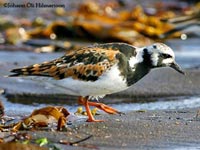 |
Tildra | Arenaria interpres | Turnstone | Steinwälzer |
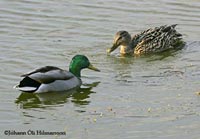 |
Stokkönd | Anas platyrhynchos | Mallard | Stockente |
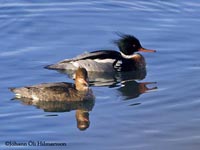 |
Toppönd | Mergus serrator | Red-breasted Merganser | Mittelsäger |
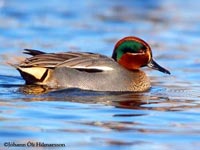 |
Urtönd | Anas crecca | Teal | Krickente |
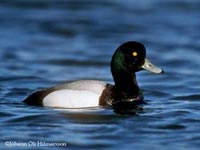 |
Duggönd | Aythya marila | Scaup | Bergente |
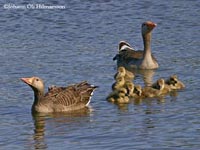 |
Grágæs | Anser anser | Greylag Goose | Graugans |
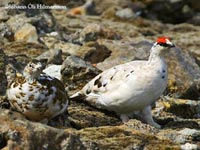 |
Rjúpa | Lagopus mutus | Ptarmigan | Alpenschneehuhn |
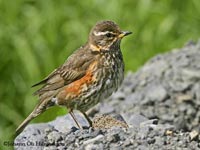 |
Skógarþröstur | Turdus iliacus | Redwing | Rotdrossel |
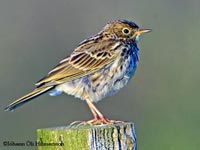 |
Þúfutittlingur | Anthus pratensis | Meadow Pipit | Wiesenpieper |
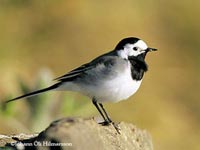 |
Maríuerla | Motacilla alba | White Wagtail | Bachstelze |
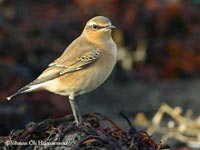 |
Steindepill | Oenanthe oenanthe | Northern Wheatear | Steinschmätzer |
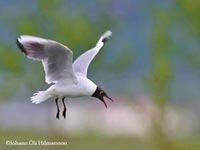 |
Hettumáfur | Larus ridibundus | Black-headed Gull | Lachmöwe |
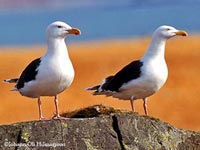 |
Svartbakur | Larus marinus | Great Black-backed Gull | Mantelmöwe |
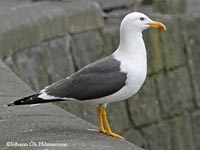 |
Sílamáfur | Larus fuscus | Lesser Black-backed Gull | Heringsmöwe |
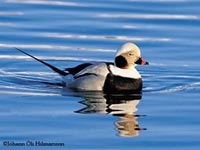 |
Hávella | Clangula hyemalis | Long-tailed Duck | Eisente |
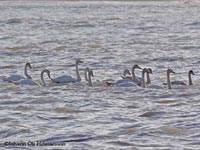 |
Álft | Cygnus cygnus | Whooper Swan | Singschwan |
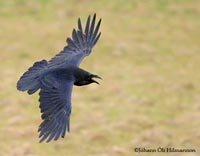 |
Hrafn | Corcus corax | Common Raven | Kolkrabe |
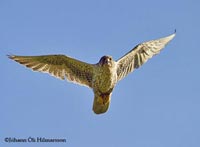 |
Fálki | Falco rusticolus | Gyrfalcon | Gerfalke |

















